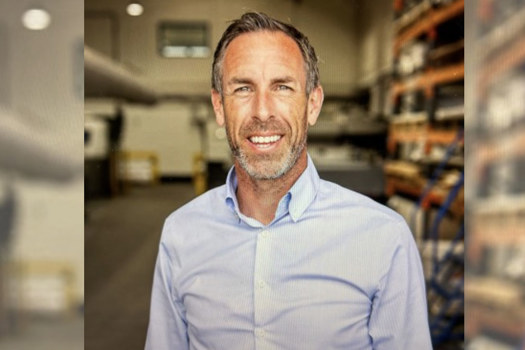Redlin Print’s array of certifications and awards are proudly on display for all to see in the foyer of the firm’s Chelmsford, Essex, base. Alongside the company’s 2007 BPIF Excellence Award hangs the latest addition – the environmental certification ISO 14001.
It is a significant newcomer to the collection. The company has invested time and money to gain the accreditation and the hard work has paid off. And credit doesn’t go just to the directors, who made the decision to go down that route, but the entire workforce that’s worked hard to implement a whole raft of systems to make the company greener. The relatively short time in which Redlin gained ISO 14001 is testament to their efforts.
We have gained this in less than a year, which is a tremendous achievement, explains Redlin operation director Ian Conetta. We already had systems in place and we were always one step ahead.
Taking the environment seriously is likely to pay off for the company in the long term. When Redlin began its ISO 14001 journey, it picked up some ‘quick wins’ by reorganising its waste streams and rethinking its approach to energy usage. The company’s strategy now is about continuous improvement and Redlin is still finding ways of fine-tuning its environmental systems.
The business has a turnover of £5m and its client base is wide; from local customers to government bodies and blue-chip firms. According to Conetta, Redlin currently has around 500 active clients with a turnover of £5m. It’s been around for the past 30 years, originally starting life as a stationery printer. In the past five years, it’s expanded through acquisitions – buying five businesses within five years. The result is that Redlin is now very much in the commercial print market.
Step-by-step
We pretty much service all things to all people, adds Conetta. We have three sites: in Chelmsford we run litho, in Basildon we have a digital operation and between the two we have a storage facility.
Moving into new sectors meant the company needed to clearly demonstrate its business attributes. So two years ago it decided to go after several certifications. Becoming a commercial printer meant that Redlin had to change its mentalities – a different culture was needed, explains Conetta.
In 2007, Redlin took its first step; gaining ISO 9001 certification for management. The following October, the company gained FSC certification for its paper. The next step was logical for Redlin: ISO 14001. We were doing a lot of local government work and we found that more and more authorities considered ISO 14001 as a given, recalls Conetta. We could not get certain contracts without it and, from our stakeholders point of view, we had to show we were responsible. Once FSC was signed, sealed and delivered, we began ISO 14001.
It meant that the company had to analyse every environmental nook and cranny. We implemented an impact analysis looking at the business and hired an external consultant, adds Philip Reed, facilities manager at Redlin. The impact analysis looked at a number of areas, including chemical usage, water, waste and energy. We wanted to assess how our business impacted the environment both internally and externally. Government legislation is a minefield and the consultant helped us work through it.
You really need that kind of help and we sourced the consultant through the BPIF – you really can’t do that kind of process on your own, adds Conetta.
After the impact analysis was concluded, Redlin identified a few areas where it could make a difference in a short space of time – areas that Conetta calls quick wins. The main focus was on waste segregation. In the past, Redlin simply had a large container situated in the yard where all waste was disposed of. Pretty much anything and everything went in it and some staff even brought rubbish from home to dump in the container.
Today there are separate containers for waste ranging from paper and chemicals to cardboard and ink tins. Redlin has linked up with J&G Environmental, which takes the waste away for recycling. The result is that Redlin has reduced its waste to landfill by around 70%. It’s not only about being more responsible and efficient, adds Conetta. We get money for the waste that’s being collected.
The financial incentives for the company are attractive, as are reductions in energy usage. Redlin has worked hard to ensure that it’s reduced the amount of electricity, gas and water it uses. However, this hasn’t been a quick win. It’s been a gradual process and one that could not have been achieved if it wasn’t for the workforce. We had a ‘switch on to switch off’ campaign throughout the business, says Conetta. It focused on very simple areas to reduce power consumption.
Waste and cost reduction
Redlin has also reduced the chemicals used in the litho process and, while it’s not switched to processless plates, it has honed its platemaking system to the extent that there is a minimal volume of waste chemistry plus a reduction in the cost of the chemical process by around 75%. ISO 14001 has meant that we have really explored this area, explains Conetta. Getting staff on board is of utmost importance and, for Redlin, there was the added challenge of uniting people from three separate sites. Transparency is key, therefore posters are displayed at the sites to highlight correct bins for different waste, while the company’s manual has clear diagrams to demonstrate environmental policy. We designed diagrams to show how it’s done and what helped was that we used photos and images, adds Reed. The ISO auditor liked it.
Redlin had many rigid systems in place by the time the auditor arrived for the first tier of ISO 14001. This involved an inspection of the premises, as well as a check-up on the programmes and policies in place. From there, Redlin had a checklist of what to improve and work on – six weeks later, the auditor returned to find out if those observations had been acted on and spoke to staff. Typically during an ISO 14001 audit, the auditor would make around 30 observations at a first tier stage.
He found just 14, says Conetta. It’s the lowest he’s ever seen and he remarked that our operation was very well structured. That really paid us an enormous compliment. We addressed all of those observations and we were ready for our certification.
So, in October this year, Redlin was able to hang the ISO 14001 certificate proudly in the reception at its Chelmsford site. However, the hard work doesn’t stop there – an auditor will return to the company next year to check that all the systems remain in order. So far, ISO 14001 has proved to be a golden ticket for Redlin, not only in terms of winning new business, but also to making it a leaner and greener company.
Make a good green impression

Achieving ISO 14001 has given Redlin Print the opportunity to attract new clients and to dramatically reduce its energy and waste collection costs, finds Philip Chadwick








